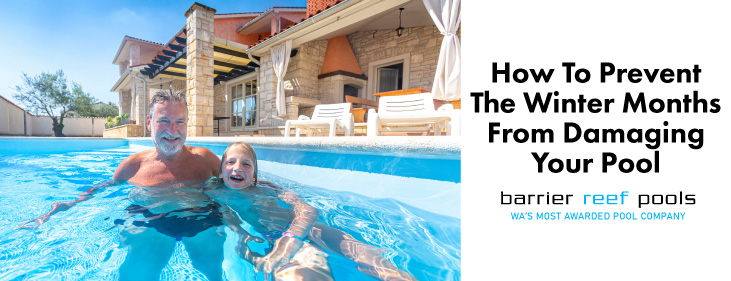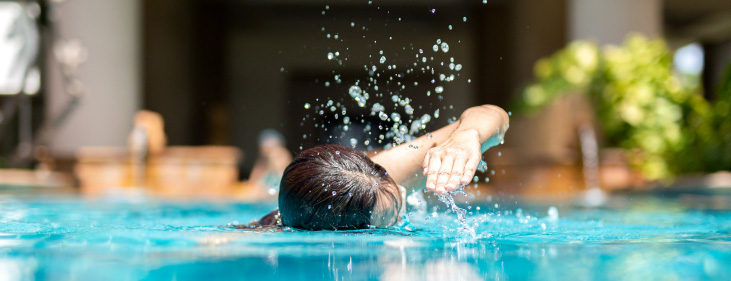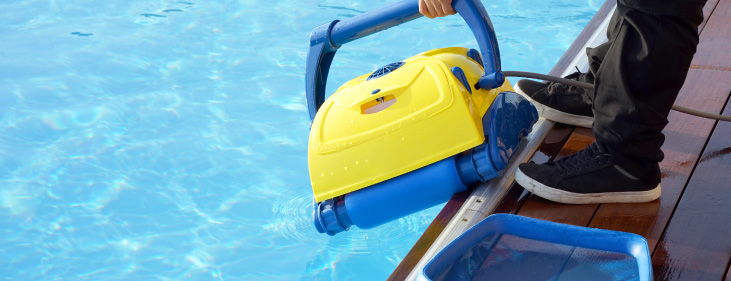If you plan on keeping your swimming pool open through the winter months, you've got to keep in mind the chances of winter pool damage. Sure, if it doesn't get very cold where you live, the winter months won't make for much of a threat. However, if the temperature drastically dips and stays that way, your pool may be in danger, and you've got to stay prepared to steer clear of any potential damage.

If you’re wondering how the winter months can be a cause for concern for your swimming pool and what you can do about it, read on. In this article, we’ll share with you all the things you need to do and how to do them for protecting your pool from the harsh cold of the winters. So, without any further delay, let’s get into it!
1. Winterise your pool or keep it closed
Winterising the pool essentially refers to two things – keeping the water moving and at a temperature at 29 degrees Celsius constantly. To do this, you need pool equipment like a pool pump and a heater. Running the pump will ensure the continuous movement of the water and the heater will ensure that the temperature of the water stays well above the freezing point.
However, for some swimming pool owners, winterising the pool is easier said than done. On the other hand, there are some who don’t need to winterise their pools at all. It all boils down to how harsh the winter is where you live. Quite simply, if you experience temperatures well below the freezing point consistently through the winter months, you must winterise your pool if you want to use it.
Some of the considerations you’ll have to make on the pool winterising front include the costs of running your pool pump and heater. Keeping these pool equipment running throughout the winter months can put a dent in your wallet, but read on to know how you can run them in a cost-effective manner. If you don’t want to incur any expenses on winterising at all, it’s best to keep the pool closed and wait for the spring season.

2. Run the pool heater for 12 hours every day and invest in a cover to lock in the heat
The best way to heat your swimming pool and minimise utility bills at the same time is to run your heater for half the day, every day. During the other half, you can make most of a pool cover, which will allow the pool space to retain the heat generated by the heater.
From the evening to the early morning is the period you should ideally aim for keeping the heater on. Typically, the colder places start getting really cold in the winter months from 6 PM onwards. So, 6 PM – 6 AM makes for the best time to let the heater work its magic. Also, keep your pool plumbing system’s valves open – this ensures effective heat distribution throughout the pool. If you don’t, only a few parts of your pool may actually benefit from the heat.
After 6 AM, as the sun gradually rises and daylight begins to dawn, you can turn the heater off and get the pool cover in place. During the 6 AM – 6 PM period, the cover should be enough to lock in the heat. In the long run, this practice can go a long way towards keeping the expenses manageable. Unless you have really deep pockets, it would be foolish to keep the heater turned on round-the-clock.
3. Choose between a pool pump or an automatic timer/freeze protector
The conventional way to ensure continuous pool water movement is to turn on the pool pump. This is the most effective method in places where the temperatures consistently remain low. However, if your area experiences mild-moderate winters with the temperatures only occasionally dipping to freezing levels, you can consider an automatic timer/freeze protector.
An automatic timer/freeze protector is a device that connects to all electrical pool equipment and automates the process of switching them on and off. Its operation is based on temperature detection, i.e. it will turn on the pool pump and heater if it detects a very low temperature.
However, the one major downside of an automatic timer/freeze protector is its cost. It’s quite an expensive device and not ideal for people on a budget. Also, this device may not work in places where the temperatures stay severely low through the entirety of winter. Ultimately, the choice boils down to your preferences and of course, how much you’d be willing to spend.

4. Prevent skimmer cracking by using a bottle filled with antifreeze
Most swimming pool owners tend to forget about the skimmer. However, the fact is that the skimmer plays an essential role in trapping debris on the pool water’s surface. When it gets really cold, the skimmer lends a helping hand in terms of water flow assistance as well.
Problems with the skimmer can arise if the temperatures dip to freezing, which can result in cracking of the skimmer’s thin PVC body. The trick to preventing this situation is to use a bottle for absorbing freeze expansion pressure. To get the bottle ready for action, simply fill 1/3 of an empty plastic bottle with antifreeze and drop it into the skimmer.
This trick is recommended only for swimming pool owners who plan on operating their pools infrequently during the winter months or keeping their pools closed.
Conclusion
A few additional methods to keep your pool water heated during winter include angling the pool jets upwards and maintaining adequate water levels. Remember, freeze damage to your pool can be devastating, and in the worst-case scenarios, you may have to shell out a lot of money to get your pool back to its best. As we all know, prevention is better than cure. So, be prepared for the winter, and you’ll be all set to safely make it through to spring when you can start using the swimming pool in full flow once again.



